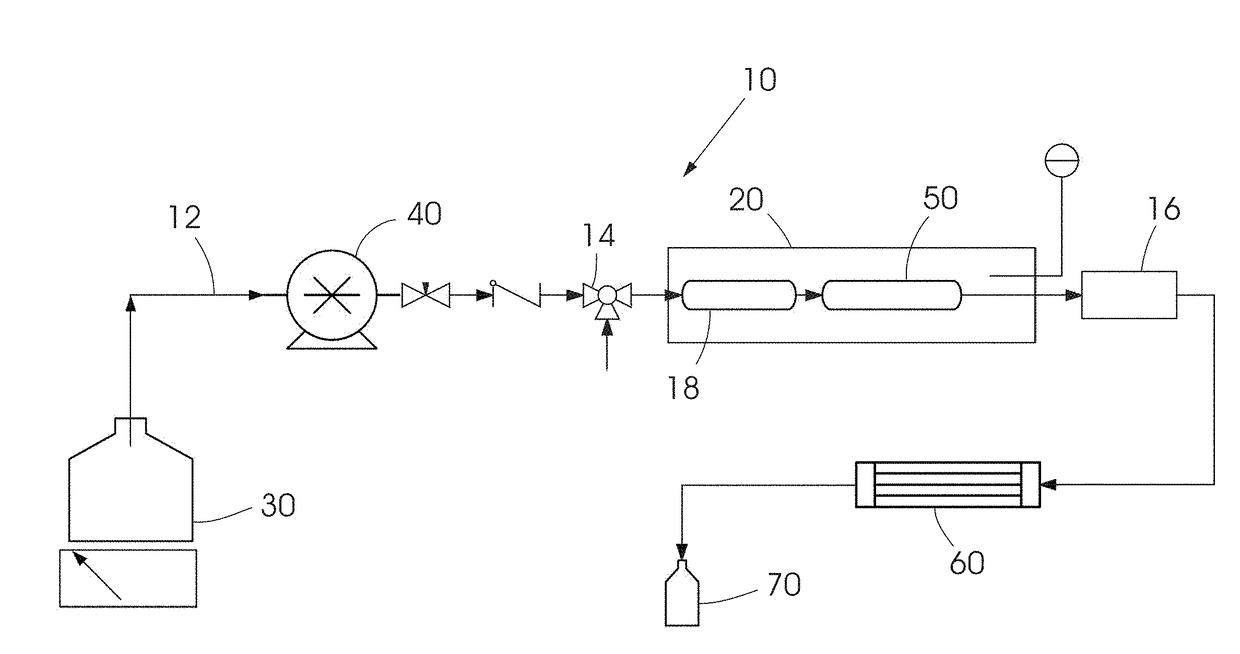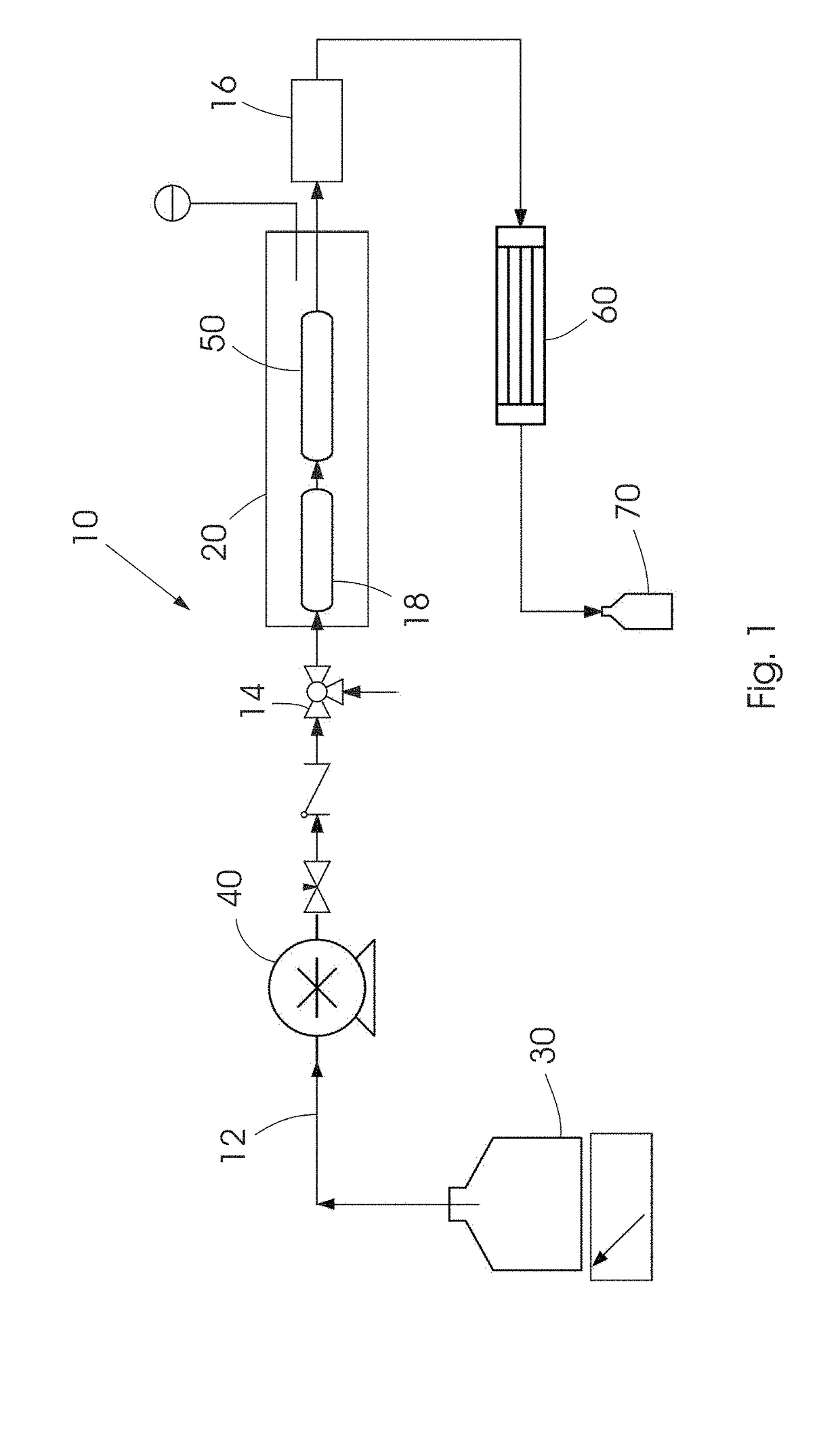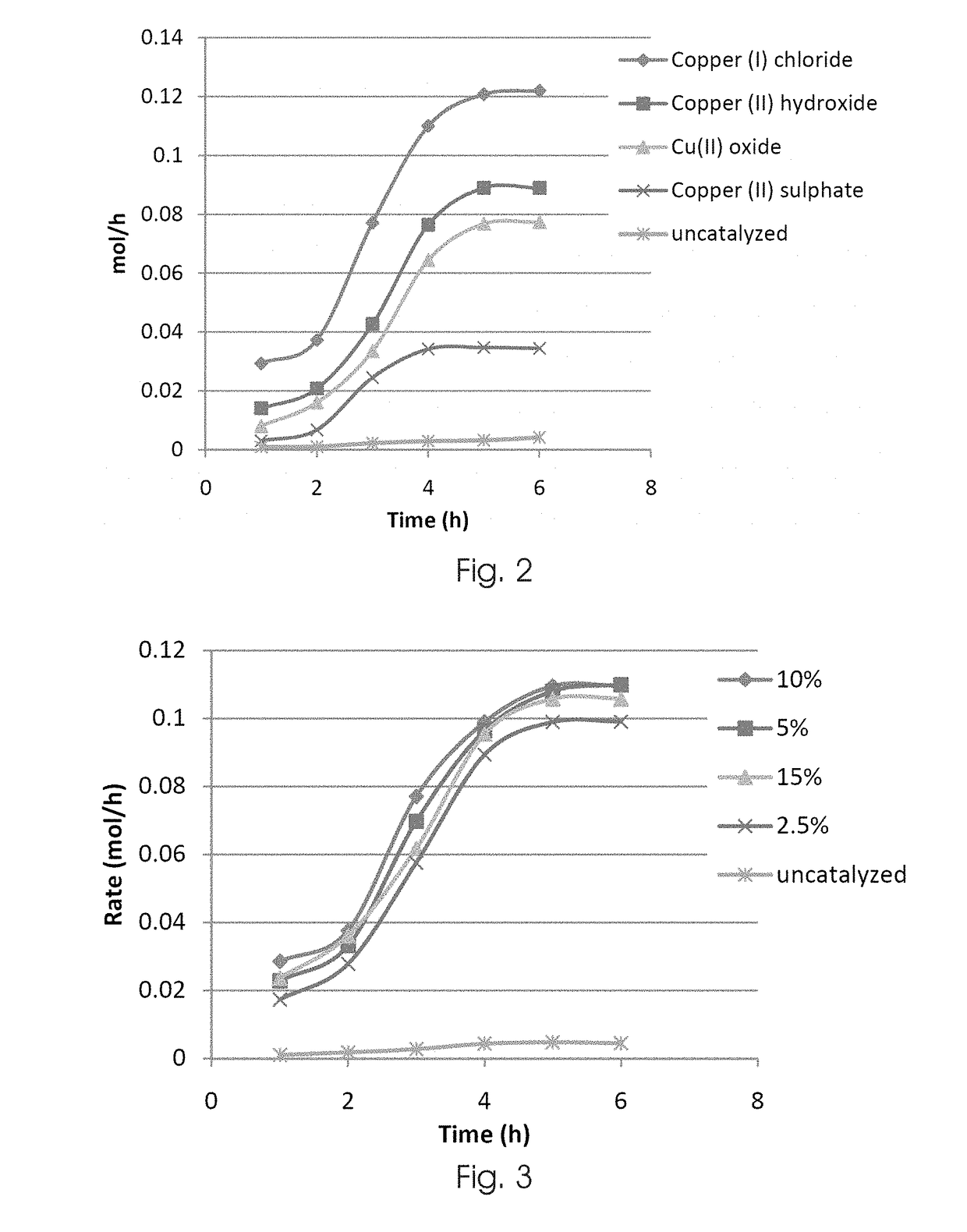Method for the selective synthesis of trialkoxysilanes
- Summary
- Abstract
- Description
- Claims
- Application Information
AI Technical Summary
Benefits of technology
Problems solved by technology
Method used
Image
Examples
experiment 1
f Copper Catalyst Type on the Rate of Triethoxysilane Formation
[0079]The effect of copper catalyst type on the rate of triethoxysilane formation was investigated for copper (I) chloride, copper (II) hydroxide, copper (II) oxide, and copper (II) sulphate. A control experiment was conducted with no catalyst present.
[0080]The reaction was carried out using the typical procedure as described above. The specific reaction conditions employed were: mass of silicon 5 g, flow rate 0.1 mL / min, activation time 2.5 hours, catalyst loading 5 wt. %, reaction temperature 240° C., activation temperature 220° C.
[0081]FIG. 2 shows a graphical representation of the results obtained for the above experiment. As can be seen from FIG. 2, copper (I) chloride, copper (II) hydroxide, copper (II) oxide shows similar reaction rate profiles, with copper (I) chloride being preferred over copper (II) hydroxide and copper (II) oxide. Although the copper (II) sulphate catalysed reaction did yield triethoxysilane, ...
experiment 2
f Catalyst Loading on the Rate of Triethoxysilane Formation
[0082]The effect of catalyst loading concentration on the rate of triethoxysilane formation was investigated for catalyst loading concentrations of 2.5 wt. %, 5 wt. %, 10 wt. %, and 15 wt. %. A control experiment as conducted with no catalyst present.
[0083]The reaction was carried out using the typical procedure as described above. The specific reaction conditions employed were: mass of silicon 5 g, flow rate 0.1 mL / min, activation time 2.5 hours, catalyst loading 5 wt. % CuCl, reaction temperature 240° C., activation temperature 220° C.
[0084]FIG. 3 shows graphical representation of the results obtained for the above experiment. As can be seen from FIG. 3, comparable reaction rates were obtained for all the selected catalyst loading concentrations. The rate of triethoxysilane formation was negligible for the uncatalysed reaction.
[0085]The results obtained in this experiment confirms that a catalyst loading concentration of 2...
experiment 3
f Activation Temperature and Activation Time on the Rate of Triethoxysilane Formation
[0086]The effect of activation temperature on the rate of triethoxysilane formation was investigated for 220° C., 350° C., 500° C., and 700° C. A control experiment was conducted with no catalyst present. Further, the effect of the duration of the activation cycle on the rate of triethoxysilane formation was investigated for 2.5, 5, 15 and 20 hours.
[0087]The reaction was carried out using the typical procedure as described above. The specific reaction conditions employed for the temperature experiments were: mass of silicon 5 g, flow rate 0.1 mL / min, activation time 2.5 hours, catalyst loading 5 wt. % CuCl, reaction temperature 240° C. The specific reaction conditions employed for the activation time experiments were: mass of silicon 5 g, flow rate 0.1 mL / min, catalyst loading 5 wt. % CuCl, reaction temperature 240° C., and activation temperature 220° C.
[0088]FIG. 4 shows a graphical representation ...
PUM
| Property | Measurement | Unit |
|---|---|---|
| Temperature | aaaaa | aaaaa |
| Temperature | aaaaa | aaaaa |
| Temperature | aaaaa | aaaaa |
Abstract
Description
Claims
Application Information
 Login to View More
Login to View More - R&D
- Intellectual Property
- Life Sciences
- Materials
- Tech Scout
- Unparalleled Data Quality
- Higher Quality Content
- 60% Fewer Hallucinations
Browse by: Latest US Patents, China's latest patents, Technical Efficacy Thesaurus, Application Domain, Technology Topic, Popular Technical Reports.
© 2025 PatSnap. All rights reserved.Legal|Privacy policy|Modern Slavery Act Transparency Statement|Sitemap|About US| Contact US: help@patsnap.com



